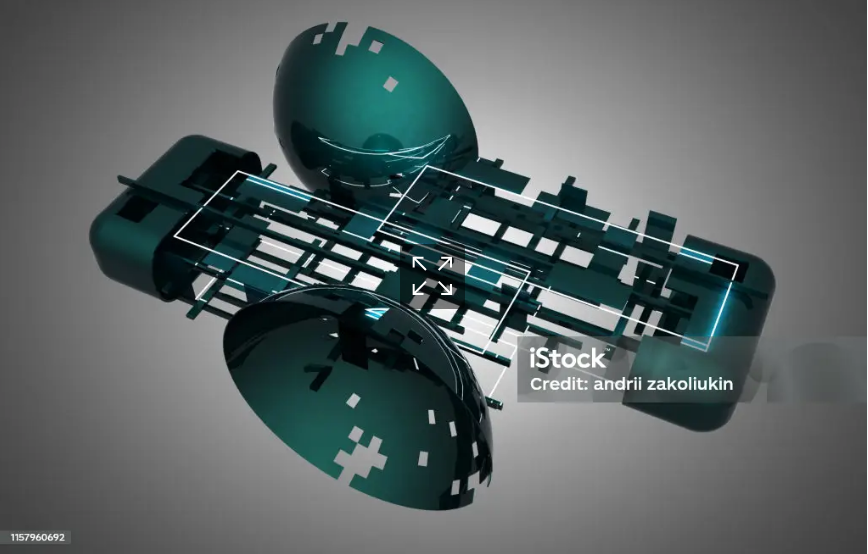In the fields of computer vision and digital imaging, denoising refers to the process of removing noise—unwanted distortions or artifacts—from an image. As image resolution and data complexity have increased, so has the challenge of processing 3D images without sacrificing quality. Modern 3D data, often captured through methods like MRI, CT scans, LiDAR, and 3D rendering in virtual environments, requires sophisticated denoising to enhance clarity and precision. Traditional approaches, while effective to a degree, often struggle with the high dimensionality and noise variety in 3D data. Enter machine learning, and more specifically, Vision Transformers (ViTs), a transformative deep learning architecture that is revolutionizing the approach to 3D denoising.
This article will explore the significance of 3D denoising, introduce how machine learning aids the process, delve into Vision Transformers’ (ViTs) architecture and application, and highlight why ViTs are particularly suited for 3D denoising tasks.
The Importance of 3D Denoising
Noise in 3d denosing machine learning vit data can come from various sources—sensor imperfections, environmental conditions, data transmission issues, or digital artifacts during data generation. High noise levels can degrade the quality of 3D reconstructions, affecting everything from medical diagnostics to virtual reality experiences.
For example, in medical imaging, accurate 3D denoising is critical for identifying subtle features in MRI or CT scans, potentially impacting diagnoses and patient outcomes. Similarly, in autonomous driving and robotics, 3D sensor noise can interfere with an algorithm’s ability to detect obstacles, leading to safety risks.
Therefore, effective denoising methods must not only remove noise but also preserve the fine details and structures within the data. Traditional denoising filters often struggle to differentiate between noise and subtle image features, leading to blurred or overly smooth outputs. Machine learning, particularly deep learning, offers a more adaptive solution.
Machine Learning in Denoising
Machine learning has provided several innovative approaches to denoising in both 2D and 3D data. The core advantage of using deep learning models for denoising is their ability to learn from data. Unlike traditional methods, which rely on predefined filters, machine learning models adapt to recognize patterns within specific datasets. With supervised learning, for example, a model can be trained on pairs of noisy and clean images, learning how to map noise-corrupted inputs to high-quality outputs.
Popular architectures for denoising include:
- Convolutional Neural Networks (CNNs): Ideal for 2D data and often applied to 3D through techniques like 3D convolutions, which extend traditional CNNs to process 3D inputs.
- Autoencoders: Learn compact representations of data and are useful for denoising since they reconstruct images, omitting noise in the process.
- Generative Adversarial Networks (GANs): Train on clean and noisy data to improve denoising results by refining outputs to look more realistic.
However, traditional deep learning architectures such as CNNs and autoencoders can struggle with spatial complexity, particularly in 3D data. This is where Vision Transformers (ViTs) enter the scene.
What Are Vision Transformers (ViTs)?
Transformers were initially designed for natural language processing, where they showed unparalleled success in capturing sequential dependencies in text data. In recent years, the Vision Transformer (ViT) architecture has adapted the transformer model for computer vision tasks, achieving state-of-the-art results in image classification, segmentation, and, recently, denoising.
A Vision Transformer does away with convolutional layers and instead treats an image as a sequence of patches, akin to words in a sentence. Each patch is linearly embedded into a high-dimensional vector space, and positional encodings are added to retain spatial information. The self-attention mechanism in ViTs then learns relationships across the entire image, enabling the model to capture long-range dependencies and contextual information effectively.
ViTs have several unique features that make them ideal for 3D denoising:
- Global Contextual Awareness: Self-attention allows ViTs to capture relationships across distant parts of an image, useful for understanding 3d denosing machine learning vit spatial relationships.
- Flexible Input Handling: ViTs can process patches from any dimension, making them adaptable for 3D data, where capturing depth, texture, and positional relationships is crucial.
- Scalability: ViTs scale well with larger datasets, a key advantage when training on high-resolution 3D images.
How ViTs Work in 3D Denoising
In 3D denoising, Vision Transformers are applied to learn the complex noise patterns within 3D data. By splitting the 3D volume into patches, each representing a small sub-volume of the data, ViTs can learn relationships between patches and how noise typically appears across different areas of the data. Here is a step-by-step outline of how ViTs operate in 3D denoising:
- Patch Creation: The 3D input data is divided into smaller patches. In 3D applications, these patches are cubes rather than 2D slices, preserving volumetric information.
- Linear Embedding: Each patch is flattened and transformed into a high-dimensional vector. This linear embedding process effectively represents complex patch features in a format the ViT can process.
- Positional Encoding: Since patches are processed independently, positional encodings are added to each patch vector, helping the model maintain spatial relationships across the entire 3D volume.
- Self-Attention Mechanism: Through self-attention layers, the ViT processes the patches in relation to each other, learning how noise might propagate spatially and temporally throughout the 3D data.
- Denoising Prediction: Finally, the model outputs a denoised version of the 3D data, ideally with noise removed but structural details intact.
Applications of ViTs in 3D Denoising
ViTs are currently being tested and implemented in a variety of 3D denoising applications, with promising results:
- Medical Imaging: 3D denoising with ViTs improves the quality of CT, MRI, and PET scans by removing noise while preserving critical anatomical details, enhancing diagnostic accuracy and image clarity.
- LiDAR and Depth Mapping in Autonomous Vehicles: ViTs help process noisy 3D sensor data from LiDAR or depth cameras, filtering out environmental noise (e.g., rain, dust) and enhancing object detection accuracy.
- 3D Rendering and Virtual Environments: By denoising 3D models used in virtual and augmented reality applications, ViTs can help create more realistic and immersive experiences.
- Remote Sensing and Geospatial Analysis: Satellite and drone data are inherently noisy, often due to atmospheric interference. ViTs in 3D denoising can improve clarity in 3D geospatial models, aiding in land mapping, resource management, and urban planning.
Advantages and Challenges of ViTs for 3D Denoising
Advantages:
- Preservation of Detail: ViTs are less likely to “over-smooth” images, a common problem in denoising. They preserve fine-grained details critical in applications like medical imaging and remote sensing.
- Scalability: ViTs can handle high-resolution 3D data and large datasets effectively, which is advantageous for industries requiring precise and large-scale denoising.
- Flexibility with 3D Data: The transformer’s attention mechanism is inherently flexible and adaptable for 3D structures, allowing it to capture complex spatial dependencies across patches.
Challenges:
- Computational Demand: ViTs require substantial computational resources and memory, especially when working with high-resolution 3D data, making them challenging to deploy in real-time applications.
- Data Requirements: Training ViTs for 3D denoising often requires extensive, high-quality datasets, which may not always be available in fields like medical imaging due to privacy concerns.
- Optimization and Fine-Tuning: Fine-tuning ViTs for 3D data can be complex, often requiring significant experimentation with hyperparameters and model structure to achieve optimal results.
Future Directions for ViTs in 3D Denoising
The potential for Vision Transformers in 3D denoising is vast, and researchers are already exploring ways to enhance their capabilities:
- Hybrid Models: Combining ViTs with CNNs or GANs could lead to hybrid models that capture both local and global features, improving denoising quality.
- Efficient Transformers: Research into lightweight, efficient transformer models could reduce computational demands, making ViTs more accessible for real-time 3D denoising applications.
- Self-Supervised Learning: To address the challenge of data scarcity, self-supervised learning techniques are being explored to allow ViTs to learn from unlabelled 3D data, further extending their applicability.
- Enhanced Positional Encoding for 3D: Developing more robust 3d denosing machine learning vit positional encodings could improve how ViTs interpret spatial relationships within 3D data, leading to more accurate denoising.
Conclusion
Vision Transformers (ViTs) are proving to be powerful tools in the realm of 3d denosing machine learning vit denoising. Their global contextual awareness, flexibility, and scalability make them particularly suited to handle the complex noise patterns found in high-dimensional data. From medical imaging to autonomous vehicles and virtual reality, ViTs are redefining how we approach 3D denoising, offering clearer, more detailed outputs. Although challenges remain, continued advancements in ViT architecture, computational efficiency, and training techniques promise to further cement their role in the future of 3D denoising and beyond.








Leave feedback about this